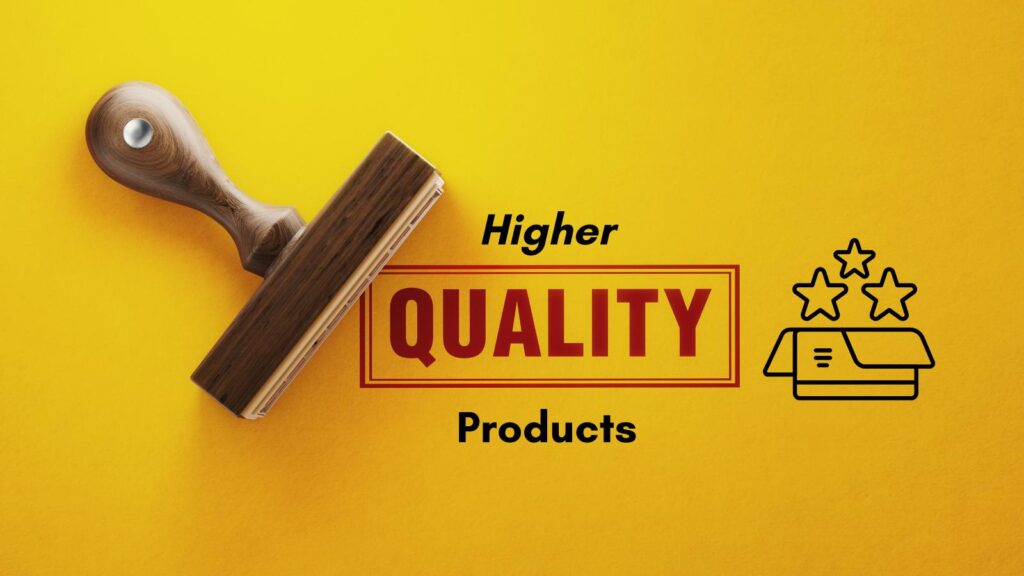When you are trying to improve the higher-quality products you make for your customers, there are many different approaches you might want to take. The fact is that you can continually improve the quality of your products, and doing so is always going to be worthwhile.
It will improve the customer experience, your business, and your sales. So here are some of the main things you might want to do when making higher-quality products.
Table of Contents
1. Define Quality
First, you may find defining quality as clearly as possible helpful. You can’t hope to improve what you haven’t yet determined, so you should make sure you are thinking about this.
Defining quality will always be difficult. Still, it’s mostly about improving the materials and components, such as swapping out which machines or ball bearings you are using or improving the functionality and performance of the item in question.
These are two of the main kinds of quality you might want to improve and work on.
2 Work On Your Processes for Higher-Quality Products
Next, you will want to consider which processes you can use to improve that quality, as defined above. There are all kinds of processes in place that you can think about here, and they will be hugely important for you to be aware of and try to work on.
That might include using better materials and tools, optimizing your manufacturing techniques, or even using automation to simplify repetitive tasks. However you do it, you want to ensure you are thinking about it.
3. Test More For High-Quality Products
It’s always worth testing your products, as this will considerably improve their quality. You should undoubtedly think about this as well, and you might find it helpful to do so if you want to ensure that you are producing better-quality products.
By rigorously testing a product, you can more effectively determine what needs improvement, so bear this in mind as best you can.
4. Improve The Culture
Your working culture makes a huge difference to the results of your products. Improving the culture can help if you want higher-quality products. Ideally, you should aim for a quality-first culture to make a massive difference in how you build things and how much success you will likely see.
This change can be beneficial and worth focusing on from the beginning.
Conclusion: Making Higher-Quality Products
Making higher-quality products isn’t just about meeting standards—it’s about exceeding expectations. Focus on the details that matter most to your customers: durability, functionality, and design.
Test and refine until the product solves real problems without compromises. Listen to feedback, fix flaws quickly, and don’t cut corners. People notice quality, and that builds loyalty. Your work will show in what you deliver if you care about it.
Frequently Asked Questions: Producing Better Products
How can I identify quality issues in my product?
Pay attention to regular customer feedback and return reports. Conduct quality control inspections at different stages of production to catch defects early. Use surveys to gather insights on customer satisfaction.
Should I prioritize customer feedback over expert opinions?
Both are important. Customer feedback reflects real-world experience, while expert opinions can highlight technical improvements. Balance their input for the best results.
How often should I update my product design?
Update only when clear demand or market feedback suggests it. Regularly evaluate designs, but avoid unnecessary changes that don’t add value.
What’s the best way to evaluate product performance for HIgher-Quality Products?
Set measurable benchmarks like durability, safety, and functionality. Use tests that mimic real-world use cases. Gather data to assess whether it meets expected performance levels.
How can I build trust in my product’s quality?
Offer transparent warranties or guarantees on your higher-quality products. Share data or certificates proving quality standards. Consistently delivering well-made products will naturally build trust over time.
How can I create a balance between innovation and quality?
Test new ideas in small batches before full-scale implementation. Don’t compromise your core quality standards while experimenting with added features or updates.
What are common mistakes to avoid during the manufacturing of high-quality products?
Cutting corners, ignoring customer feedback, skipping quality checks, and not training your team thoroughly can lead to repeat issues and higher costs down the line.




